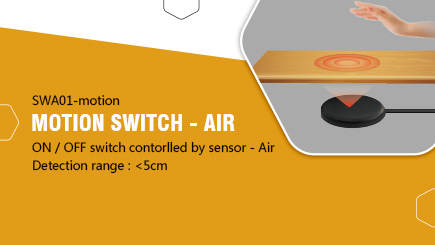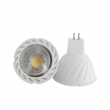Analysis on the Importance of LED Light Source to Circulating Aquaculture System
2017-05-25 14:35:14
China is the world 's largest aquaculture. In 2011, the total output value of China's fishery economy was about 1.7 billion yuan, up by 14.36%; the total output of aquatic products was 5507.68 million tons, up by 4.87% over the previous year; the aquaculture area was about 8 million hectares, up 3.23 percent over the previous year, Aquaculture production accounts for 70% of the world's total output. At present, there is a growing demand for aquaculture to support high-tech industrialized farming patterns, including the creation of scientific artificial light environments. Light is the dominant factor in the fish metabolism system. Light as energy enters the waters ecosystem, not only for the aquatic plants and plants to inject the necessary energy, but also independently of the fish feeding, reproduction, endocrine play a direct or indirect impact. Modern factory aquaculture light refers to the fish in accordance with the needs of the law of light and aquaculture production goals, the use of artificial light to create appropriate light environment or make up for the lack of natural light to regulate the growth and reproduction of fish to achieve aquaculture "High quality, high yield, ecological, safe" production objectives of a agronomic physical measures.
At present, there are few studies on the effects of light on the growth and reproduction of fish. The use of light sources in aquaculture workshops is simple and extensive. Most of the breeding plants are built with no secondary lighting design. With the development of semiconductor technology, people gradually realized that LED artificial light as a physical means, not only can increase the efficiency of aquaculture growth, but also can promote fish growth, control fish gonadal development, access to green high quality food. LED is safe, healthy, "green light", no pollution after pollution, environmental protection and energy conservation. Today, LED light source has been large-scale application in the plant, poultry farming, aquaculture industry will also be more and more applications of LED artificial light source, through the artificial light environment to achieve aquaculture on-demand production function, significantly improved Production efficiency and efficiency.
Current status of light source in aquaculture production workshop
For a long time, the vast majority of artificial light sources used in aquaculture workshops are straight fluorescent lamps or compact fluorescent lamps commonly used in civilian buildings. Fluorescent light is the use of low-pressure mercury vapor in the discharge process of radiation ultraviolet light, so that the principle of fluorescent light emitted light. The current advantage of this light source is easy to buy, easy installation. However, the use of this light source in the aquaculture industry causes a lot of problems, even insurmountable problems. First of all, the average life of this product in about 10,000 hours, but in the humid environment, life is often only a few thousand hours. Followed by this gas discharge lamp can not be dimmed, can not meet the individual fish in different growth period of light demand. Moreover, the abolition of fluorescent lamps will seriously pollute the water. Studies have shown that the water environment, the higher the pollution of mercury, aquatic animals, the higher the amount of mercury. Mercury is easily absorbed and enriched by passive objects, is not easily excluded by passive objects, and can not be decomposed by passive objects. It is transmitted through the food chain, will cause harm to the human body. An energy-saving lamp lamp contains an average of 2 ~ 3mg of mercury, 1mg of mercury can make 360 tons of water pollution, if the lamp in the breeding pool will immediately pollute the entire workshop aquaculture water. Therefore, the traditional gas discharge light source has not adapted to green, energy saving and optimization of light environmental parameters.
Production workshop lighting selection
The chip wavelength, power and electronic control system of LED lamps can be determined according to the published literature or through experiments to obtain the best light environment parameters of fish's physiological rhythm, feeding behavior, growth and reproductive performance. At the same time, according to the form of chip packaging, lens light distribution, lamp appearance, protection level can design the overall lighting, and produce a scientific application of LED lamps, used in aquaculture industry lighting environment.

Lamps have national, industry or local standards, should meet the corresponding standard requirements; for no country, industry or local standards, for aquiculture applications for special occasions, LED lamps should meet at least the following requirements.
1, light color, light intensity and photoperiod selection
Melatonin has a modulating effect on the hypothalamus - pituitary - gonadal axis of fish. Fish melatonin synthesis and secretion of rhythm is mainly affected by light and temperature, fish melatonin involved in reproductive, development and growth regulation. The light, especially the photoperiod, significantly inhibits the synthesis and secretion of melatonin from the fish. Artificial light environment to create a three important factor is light color, light intensity and photoperiod. Only to give these three main parameters, lighting manufacturers to produce the requirements of the lamps and lanterns.
At present, the main varieties of industrial aquaculture are grouper, sea bream, salmon trout, flounder, bass, yellowtail, black striped bass, puffer fish, American red fish and so on. The growth and development of each fish in the unique geographical environment, including salinity, temperature, water depth, current, oxygen content, nutrients, elevation, topography, food resources and food chain structure, and the history of land and sea changes. In the hundreds of millions of years of wild environmental life evolution, the fish formed a unique physiological, behavior, sensation and so on, the population in the long-term evolutionary adaptation process, interact with the natural environment, so that individuals choose to achieve the greatest degree of survival light surroundings. Such as seawater middle fish as the visual pigment is suitable for accept the blue short spectral band, the majority of visual cells by the rod cells. Spring and summer season spawning fish is a long light-type fish, autumn and winter season, the eggs are short-cut fish
Experiments have proved that by manually adjusting the light environment, the long light of the fish in advance to extend the sunshine time than the natural state of some of the short-light type of fish in advance to the sunshine time shorter than the natural state, usually make the fish ahead of maturity and spawning. Many studies have shown that the fall of the salmon trout is the case, that photoperiod on the fish gonad and so the most obvious impact. Followed by light color, light intensity factors can not be ignored, such as European perch and sole eye juvenile fish in line with its wild environment under the blue light conditions, to achieve the best development rate. 250lx light when the Chinese sturgeon can get the best hatching rate (83.9%). When setting the light color, consider the ratio of rhodopsin to rhodopsin in the fish visual pigment, that is, whether it is fresh water or seawater. Breeding manufacturers need to according to the breeding of fish species, access to relevant literature and carry out the early light of the environment experiment, according to different types of fish in the natural environment migratory water depth or habitat characteristics, you can roughly calculate the required halo value, and then select the appropriate lighting. Finally, the experimental data were compared repeatedly, and the optimal optical environment parameters were screened out.
2, the second light distribution design
Aquaculture pond has nursery pond, adult pond, broiler pond, etc., mostly cement pool, plastic pool or glass steel pool, the shape of a round, rectangular, oblong, ring type and so on. Square fish pond side length is generally 6 ~ 7m, breeding flounder flounder fish pool depth 0.8 ~ 1.0m, breeding swimming class, such as sea bream, grouper, American red fish, water depth 1.8 ~ 2.0m.
Traditional lamps and lanterns of the lens and the reflector light is basically not suitable for aquaculture workshop fish pond light cover requirements, circulating water fish pond shape characteristics are mostly regular geometric shape, so the LED lens and reflector to be designed together with the use of high refraction The rate of the lens material, it is necessary to even the water spot, but also just cover the entire fish pond to save energy. Secondly, according to the different depth of the fish pond, should consider the luminous intensity of the light source and the scientific formula to calculate accurately.
4, color temperature and color rendering index
Architectural lighting design must have color temperature (Tc) and color rendering index (Ra) requirements. The color temperature is expressed in Tc, in K. When the radiation of the light source is exactly the same in the visible and absolute black bodies, the temperature of the blackbody is referred to as the color temperature of the light source. Low-color light source of the red radiation relative to say more, color temperature increased after the increase in the proportion of blue radiation.
The color rendering index is expressed by Ra, and the color rendering index is the original color index of the substance. The higher the color rendering index, the closer to the original color of the material, its value close to 100, the best color. In aquaculture production, these two light source indicators are generally not required. But the need for long wavelength spectral energy distribution, you can increase the CIE definition CRI R9 saturated red ratio, that is, to increase the package of nitrided red phosphor; need short wavelength spectral energy distribution, you can use a higher color temperature white light The Therefore, in some cases, long wavelength monochromatic light can be replaced with white light with a low color temperature and a high color rendering index. The short wavelength can be replaced by white light with a high color temperature. Such as Warm White LED blubs with a color temperature of around 3200K. This design has the following advantages: First, white is very beneficial to the visual health of the workshop operator; Second, a large number of white light for functional lighting, aquaculture equipment procurement costs can be greatly reduced.
3, protection level safety requirements
Protection level should meet the design requirements, and in line with GB7000.5-2007. Aquaculture workshop humidity is more than 90%, so the water requirements of the lamp is relatively high, the protection level standard to achieve IP65, if the energy saving to install the lamp to the aquaculture of aquaculture, IP level at least IP67 above. The installation location of the workshop is easy to contact with people. If the fastening screw touches the live circuit board and so on, it is extremely dangerous to make people electric shock in the wet environment of the workshop. So the choice of lamps, one should pay attention to whether the IP IP IP or above; Second, the use of isolated constant current power supply, leaving the minimum creepage distance, and the best use of centralized external power supply, centralized external power is Using a high-power AC / DC switching power supply, unified power supply.





